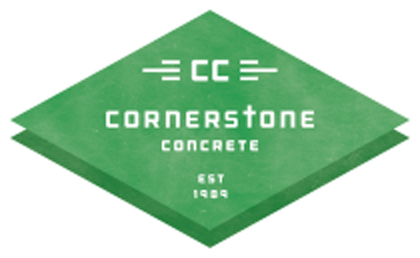- Deicing chemicals: Absorb moisture, lowering water’s freezing point.
- Concrete vulnerabilities: Freeze-thaw cycles cause cracks and structural damage.
- Preventative measures: Apply sealants and shovel snow promptly.
- Regional relevance: Midwest driveways face unique challenges from temperature fluctuations.
With winter’s icy grip comes the annual battle to keep driveways and walkways clear of snow and ice. While deicing chemicals provide a quick solution, they bring with them a less visible problem – the deterioration of the very surfaces they clear. This silent degradation can have long-term consequences for the integrity and appearance of concrete driveways, often leading to expensive repairs or replacements. In this comprehensive guide, we’ll uncover the hidden risks of deicing chemicals and arm you with the knowledge to minimize their impact on your property.
Understanding Deicing Chemicals
Defining Deicing Chemicals: Composition and Common Types
Deicing chemicals are a class of hygroscopic compounds that absorb moisture and lower the freezing point of water, turning ice back into liquid water even in cold temperatures. The most common deicing agent is sodium chloride, commonly known as rock salt, which is favored for its availability and cost-effectiveness. However, other agents like calcium chloride, magnesium chloride, and potassium chloride are also widely used, each with its own unique properties and efficacy at various temperatures. Understanding the composition and characteristics of these chemicals is crucial for any homeowner looking to make an informed choice.
The Role of Deicing Agents in Winter Road Safety
The primary purpose of deicing chemicals is to ensure public safety by preventing the formation of ice on roads and walkways. Their application helps reduce the risk of accidents and injuries due to slippery conditions. However, the widespread use of these substances has unintended consequences, particularly when they interact with the concrete used in the construction of driveways and sidewalks.
The Impact on Concrete Driveways
Why Concrete is Vulnerable: The Nature of Concrete Driveways
Concrete driveways are constructed using a mixture of cement, water, sand, and gravel. This combination, while durable and long-lasting, is inherently porous. When water from melted ice infiltrates these pores and subsequently freezes, it expands, causing internal pressure. Deicing chemicals exacerbate this process by increasing the number of freeze-thaw cycles the concrete undergoes, amplifying the potential for damage.
Surface Issues: Recognizing the Signs of Chemical Damage
The earliest indications of chemical damage to concrete driveways often manifest as scaling or spalling – where the top layers of the concrete begin to peel away. This can quickly turn a once-smooth driveway into a pitted and rough surface, making it unsightly and, more importantly, compromising its structural integrity. Other visible signs include chipping, cracking, and a general dullness where the exposed aggregate becomes more pronounced.
Structural Concerns: How Chemicals Weaken Concrete Over Time
Beyond cosmetic issues, the chemical processes can cause more severe problems. The crystalline structure of ice that forms within the concrete can push apart the aggregate, leading to deep cracks and voids. Repeated cycles of thawing and freezing will widen these cracks, potentially leading to structural failure. In severe cases, the driveway may become unsafe and could require a complete overhaul.
Scientific Explanation of Damage
The Chemical Reactions between Deicers and Concrete
When deicing chemicals dissolve in the melted ice, they form a brine that is readily absorbed by the concrete. This brine can then react chemically with the components of the concrete, such as calcium hydroxide, to form new compounds like calcium oxychloride. These new compounds take up more space than the original concrete components, creating internal pressure and causing the concrete to crack and deteriorate.
Factors That Accelerate Damage: Temperature Fluctuations and Moisture
The effectiveness of deicing agents is influenced by temperature, with different chemicals having different lowest effective temperatures. When temperatures fluctuate around the freezing point, it can lead to an increased number of freeze-thaw cycles. Additionally, the presence of more moisture, both from the environment and as a byproduct of the deicing process, means there’s more potential for water to seep into cracks, freeze, and cause damage. These cycles put stress on the concrete, progressively weakening its structure and leading to the issues outlined previously.
Immediate and Long-Term Effects
Short-Term Effects: Surface Deterioration and Aesthetic Damage
In the short-term, the application of deicing chemicals can lead to a host of surface-level issues. Initially, these may appear as purely cosmetic: a dulled finish, light pitting, or a powdery residue known as efflorescence caused by the leaching of salts. However, these surface blemishes are often the precursors to more severe damage, acting as indicators that the integrity of the concrete may be compromised.
Long-Term Implications: From Cracks to Structural Failures
Over time, and with repeated exposure to freeze-thaw cycles and deicing chemicals, concrete can suffer from extensive cracking, heaving, and even complete structural failure. As the concrete expands and contracts, the internal pressures can cause it to buckle and crack, leading to costly repairs. In extreme cases, large sections of the driveway may need to be removed and replaced, representing a significant investment for homeowners.
Preventative Strategies
Best Practices for Applying Deicing Chemicals
To mitigate the harmful effects of deicing chemicals, it’s essential to use them responsibly. This includes applying them in moderation, only before a storm to prevent ice bonding, and selecting less corrosive products. Applying deicing chemicals in moderation before storms, mixing sand for traction, and shoveling snow promptly to minimize deicing needs.
Protective Measures: Sealants and Barriers
One of the most effective preventative measures is sealing the concrete. Sealants can provide a protective layer that minimizes the penetration of water and chemicals. Applying a high-quality sealant before winter helps protect concrete. Reapply every few years, depending on local winter conditions.
Early Detection: How to Spot and Assess Damage
Regular inspection of your driveway can help catch damage early, allowing for more straightforward, less costly repairs. Look for uneven surfaces, discoloration, and small cracks. Keeping a record of these observations can help track the progression of damage over time.
Alternative Deicing Methods
Eco-Friendly Deicing: Balancing Efficiency and Safety
Environmental concerns and the desire to protect infrastructure have driven the development of more eco-friendly deicing options. These include products like CMA (calcium magnesium acetate), which is less corrosive and safer for concrete and the environment, though often at a higher cost.
Innovative Solutions: New Technologies in Deicing
Technological advancements have led to the creation of alternative deicing solutions, such as hydronic heating systems that warm driveways, eliminating the need for chemical deicers. While such systems involve an upfront investment, they offer long-term savings by preserving the driveway and reducing the need for repairs.
Expert Advice and Recommendations
Insights from Industry Experts: Maintaining Your Driveway in Winter
Experts in concrete care and winter maintenance emphasize a proactive approach to driveway maintenance. By choosing the right deicing products, applying them correctly, and keeping the driveway in good repair, homeowners can significantly extend the life of their concrete surfaces.
The Cost of Safety: Economic Impact of Deicing Chemicals on Concrete Maintenance
The economic impact of using deicing chemicals is two-fold: while they are essential for safety, their corrosive nature can lead to increased maintenance costs over time. Balancing these costs with the benefits requires a strategic approach to winter driveway maintenance.
Conclusion
Understanding the effects of deicing chemicals on concrete driveways helps in making informed choices. By considering both immediate needs and long-term consequences, homeowners can protect their property and ensure a safe, durable surface for years to come. For expert advice on protecting your concrete driveway or to learn more about winter care strategies, contact Cornerstone Concrete for a free estimate. Our team is here to help you maintain a durable driveway, particularly for Midwest winters. Learn more about prepping for winter and the benefits of installing concrete driveways.





